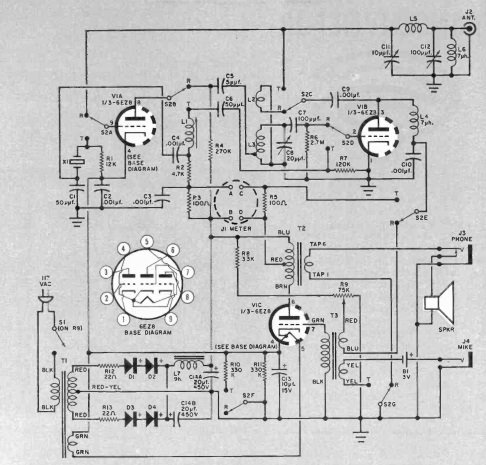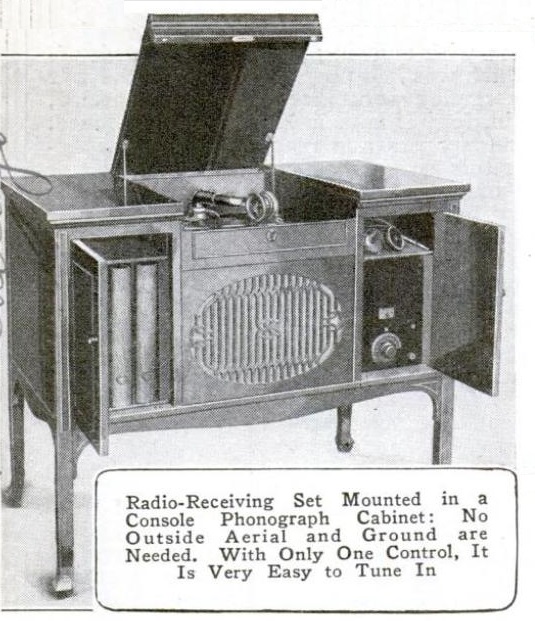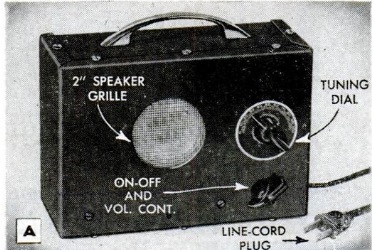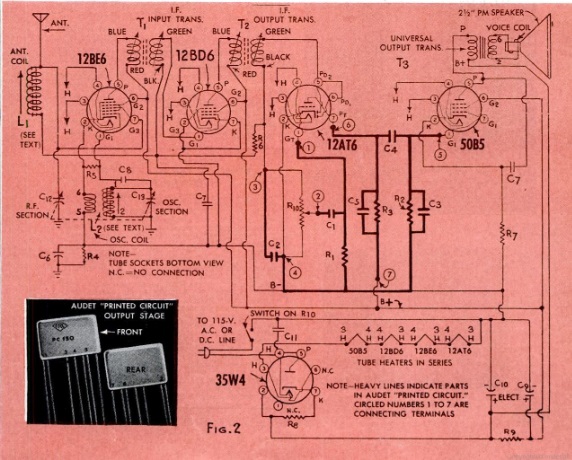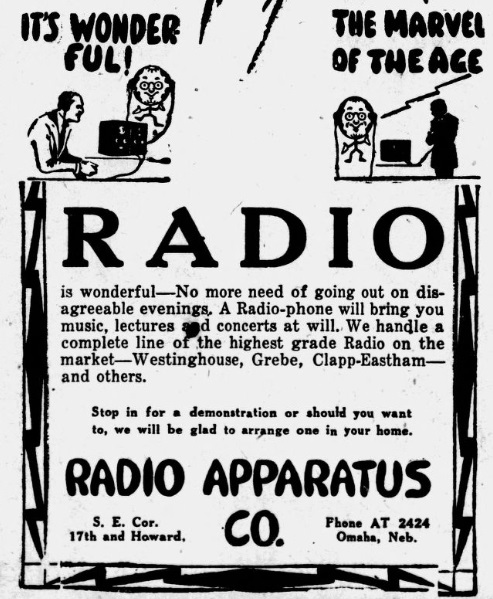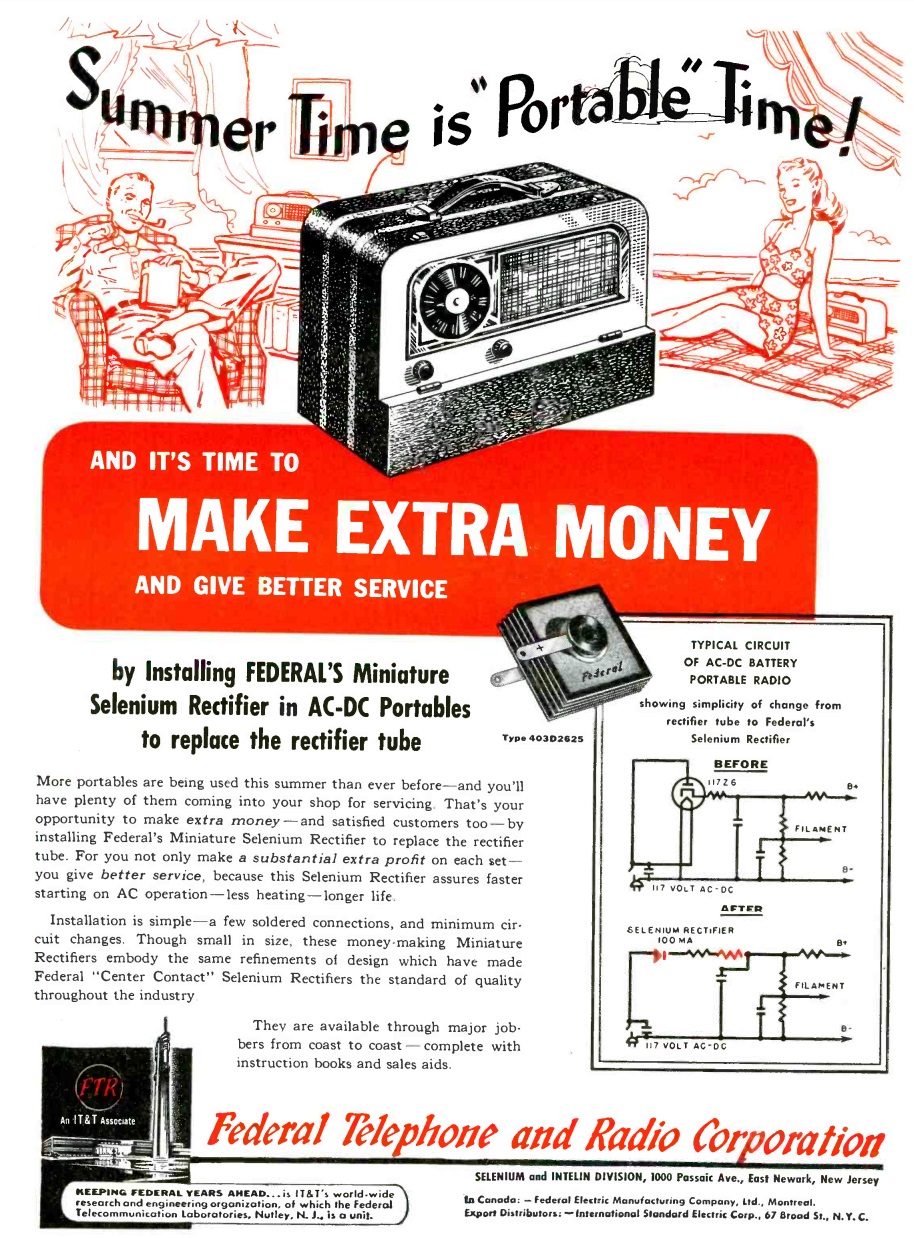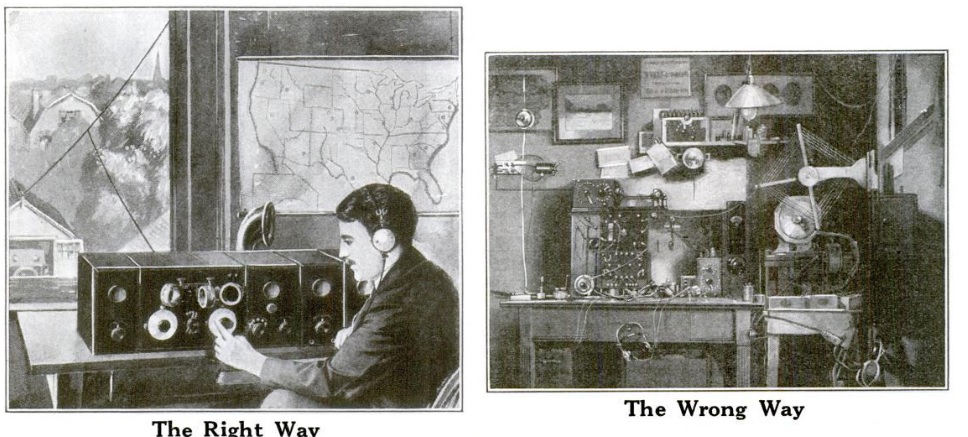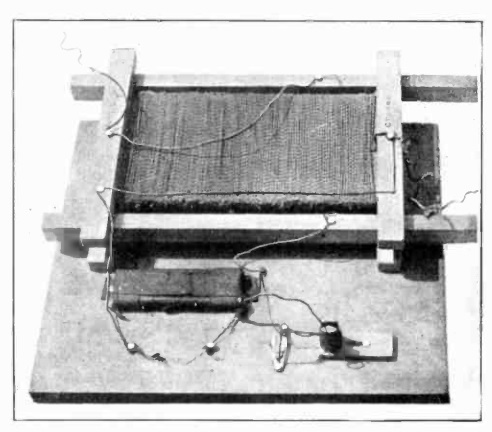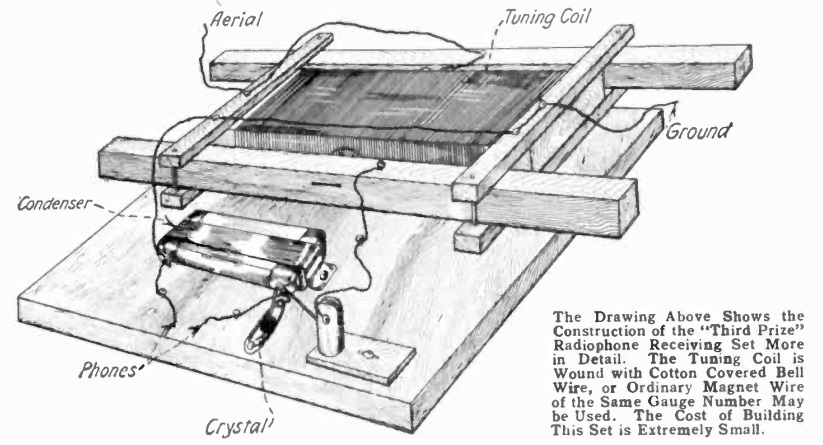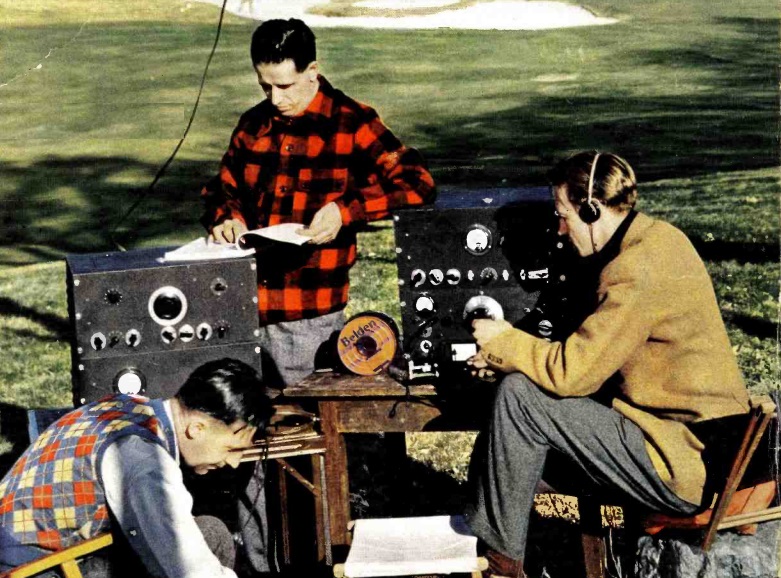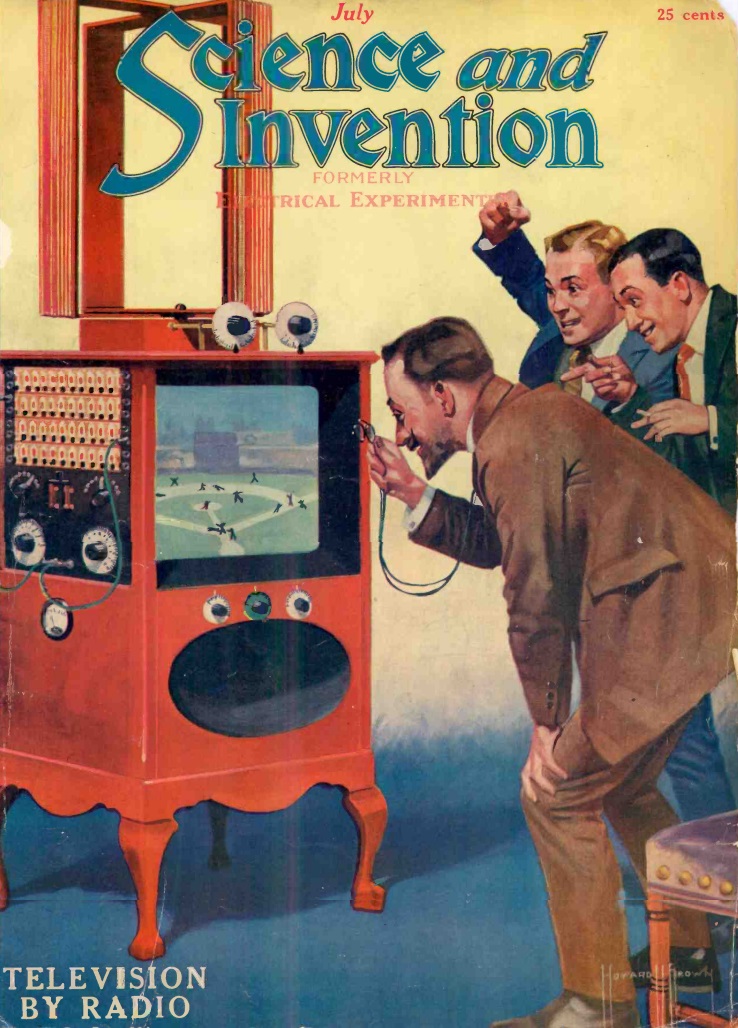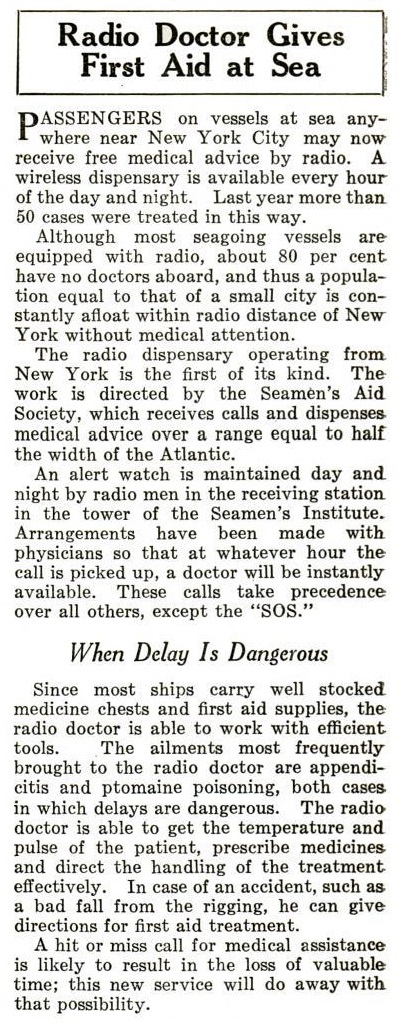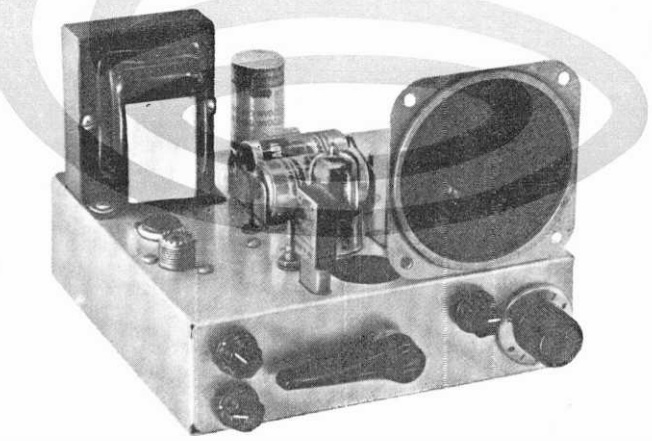 This handsome one-tube six-meter transceiver made its debut 60 years ago this month, in the August 1962 issue of Popular Electronics. The set was put together by author Michael Robbins, K6OAH, who reported that from his Los Angeles location, during a band opening, the set was able to pull in signals from the Mexican to the Canadian border. The transmitter put out a respectable 2 watts.
This handsome one-tube six-meter transceiver made its debut 60 years ago this month, in the August 1962 issue of Popular Electronics. The set was put together by author Michael Robbins, K6OAH, who reported that from his Los Angeles location, during a band opening, the set was able to pull in signals from the Mexican to the Canadian border. The transmitter put out a respectable 2 watts.
The secret of the design was the 6EZ8 triple triode. On receive, it allowed one stage of RF amplification before the superregenerative receiver, which probably meant that the receiver didn’t radiate an annoying signal. The set ran on AC power, although it included two flashlight batteries to power the carbon microphone.

